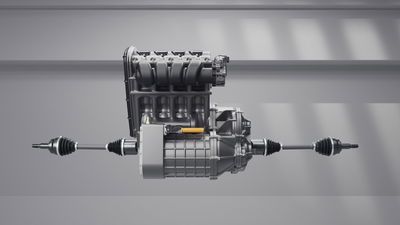Why Car Makers Are Stepping Up Their Video Game Presence

Car manufacturers are keen to get more brand exposure to the right audience, and their target market is not always who you would expect. The average gamer is 31 years of age, but some marketing experts believe that car companies are partially using their product placement to form an early recognition in 10-16 year-old boys. At a young age, future drivers will begin to differentiate the design styles and engine sounds between brands. The idea is that players who are not old enough to drive could possibly choose their first car from a brand they’ve come to love through gaming.

Car makers are using their in-game presence for more than just brand recognition. There are a few avenues through which to showcase a concept car or next year’s design to so many people before the production car hits the dealership. Gamers can get a look at the future car, often with very detailed interior and exterior views. They can experience its handling, witness its speed and listen to its mighty exhaust notes all without setting foot out of their home.
The cost of bringing digital ‘test drives’ to the public is exceptionally lower than the cost of staging worldwide showcase events. The choice for manufacturers is simple when considering that they can reach more people in less time for a lower cost. When it comes to marketing high-end vehicles and future models, the target audience is established career-minded people who play driving games for the joy of driving, and not because they are too young to legally drive on real roads. These people will be the future drivers that boost high-end vehicle sales.

It’s a win-win situation for everyone. The manufacturers can market their brand, developers get to build upon detailed specs from real vehicles and players have more variety of cars to race. The Forza and Gran Turismo series are veterans to this practice. In the past this would have set them apart from their competitors, but as we see this season, everyone’s doing it.
So why haven’t manufacturers always embraced marketing through video games? First of all, there was a long-held misconception that video games mostly were played by children. Yes, there are thousands of games made for children, but that is just a slim portion of the huge video game market. The Entertainment Software Association says that currently 71 per cent of all gamers are 18 or older. When it comes to racing games, most players are men aged between 20 and 35. Numbers like these are hard for the auto industry to ignore.

The other factor that was preventing real brands in games was the lack of realism. Until recently, video games just didn’t have the graphic quality to do justice to the vehicles they portrayed. A manufacturer would have been taking a huge risk to allow potential customers’ impressions to be based upon a developer’s translation of the car. If the vehicle didn’t handle properly or the paint job didn’t look just right, it may have left an inaccurate impression on the player of how the vehicle really looks and feels. The good news is that these issues have been addressed, and now manufacturers are more than happy to push their product in games.

With racing games gaining popularity, especially this season with so many releases, the auto industry will continue to push its brands in the virtual world. Representatives from GM and BMW have recently said that they plan to keep using racing games to showcase their past, present and future models. All we can say is: bring it on, car makers!
What models are you missing in your favourite car game?














Comments
No comments found.